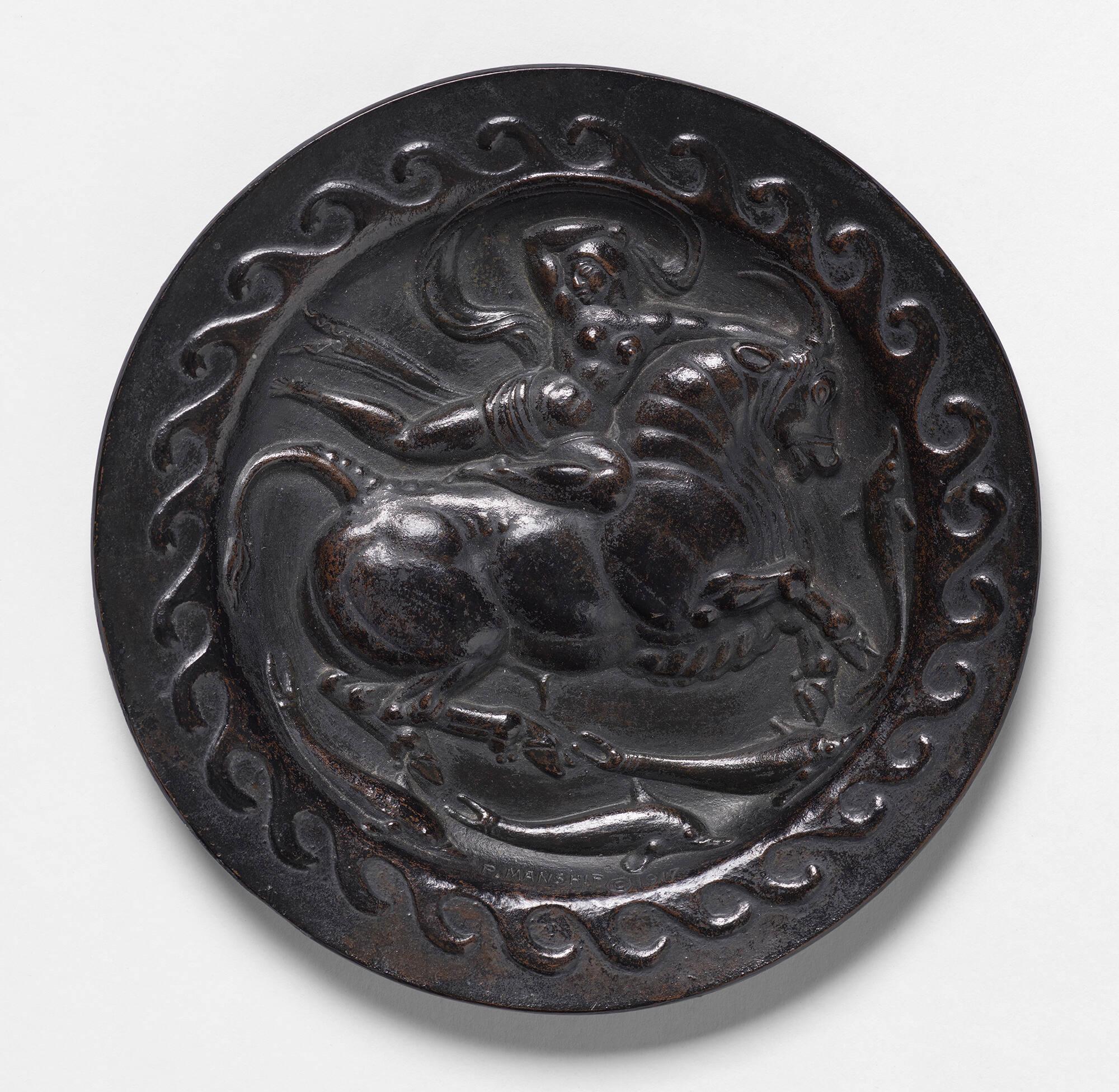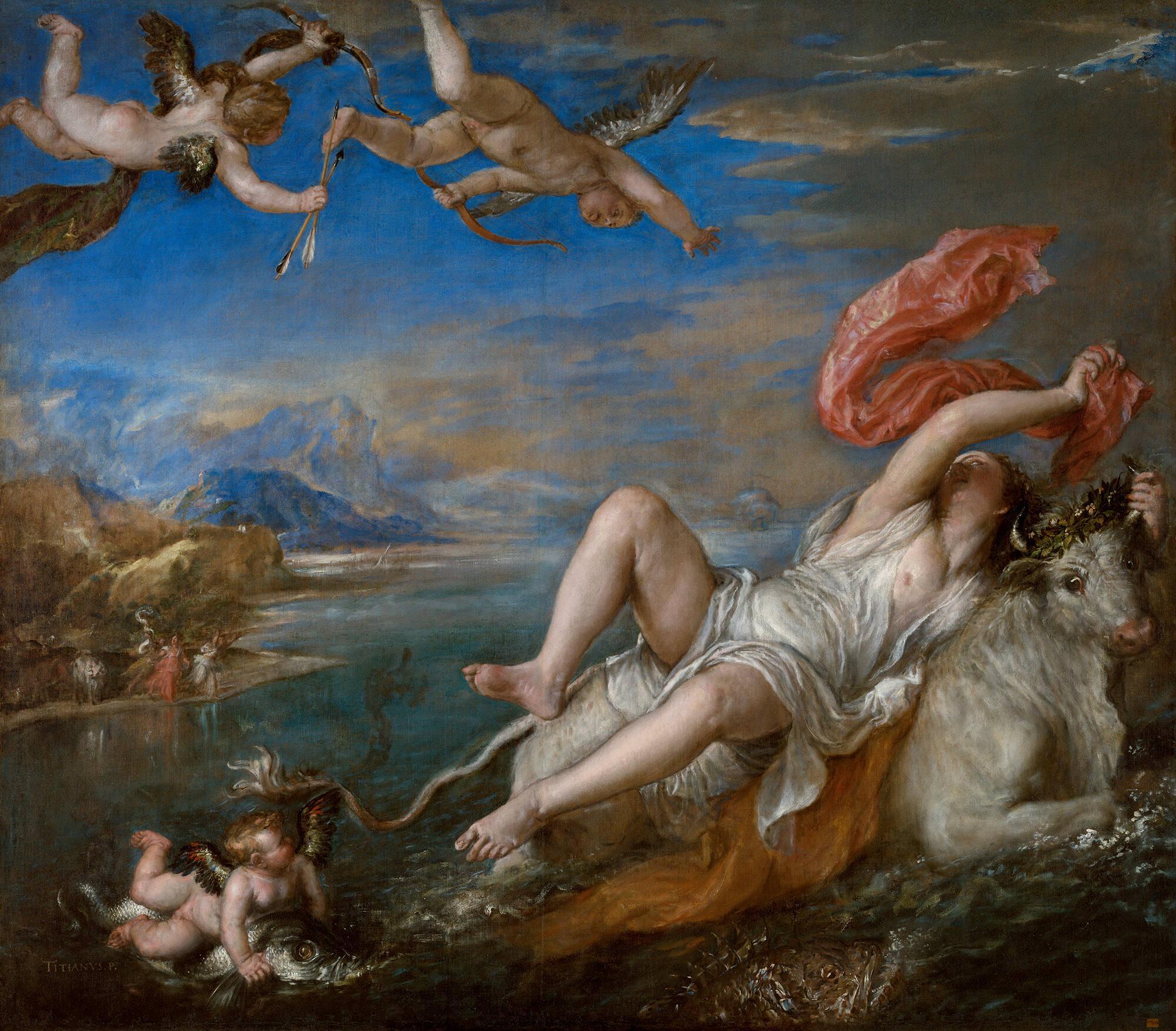Mrs. Manship joins me in wishing you the very best of Merry Christmases and are sending you this little tray as a trifling remembrance of your many kindnesses to us.
Given to Isabella Stewart Gardner for Christmas in 1917, the small, round bronze relief by American sculptor Paul Manship depicts the rape of Europa—the same subject of Titian’s masterpiece in Isabella’s collection.
The story of Europa originates with the Roman poet Ovid’s Latin narrative poem, Metamorphoses. Infatuated with Europa, Jupiter—king of the gods—transforms himself into a white bull and joins a herd grazing near the seashore. Finding the bull tame, Europa plays with him in a meadow and entwines a wreath of flowers in his horns. When she climbs on his back, the god seizes the opportunity and springs into the sea, spiriting Europa away while she clings to him in terror.
The rape of Europa led to the the birth of Minos, king of Crete and the Minoans, the first European civilization. Manship was attracted to classical subject matter, but his bronze relief for Gardner was inspired by Titian’s painting, which he saw in Isabella’s collection. Recognizing this connection, she displayed his relief in the Titian Room, beneath the work that inspired it.
Poor Europa—what stormy seas she has traversed since that fateful day when Zeus [Jupiter], the mighty deceiver raped her and carried her off across the deep—Mr Titian has proved that Europa & the Bull is a great subject—This relief is to try out the subject for composition—How do you think that it will work out in the round, I want to try it.
While Titian’s painting captures Europa’s fear, Manship portrays the Phonecian princess stylishly posed as if dancing on the bull’s back.
In 1924—the year Isabella died—Manship revisited Europa as a subject, this time with a composition in the round. In Europa and the Bull, Europa’s posture is very similar to her pose in Gardner’s relief. In the free-standing sculpture, however, Manship further romanticized the story of sexual violence. In front of the bull, Europa gazes into his eyes and caresses his head as he licks her arm.
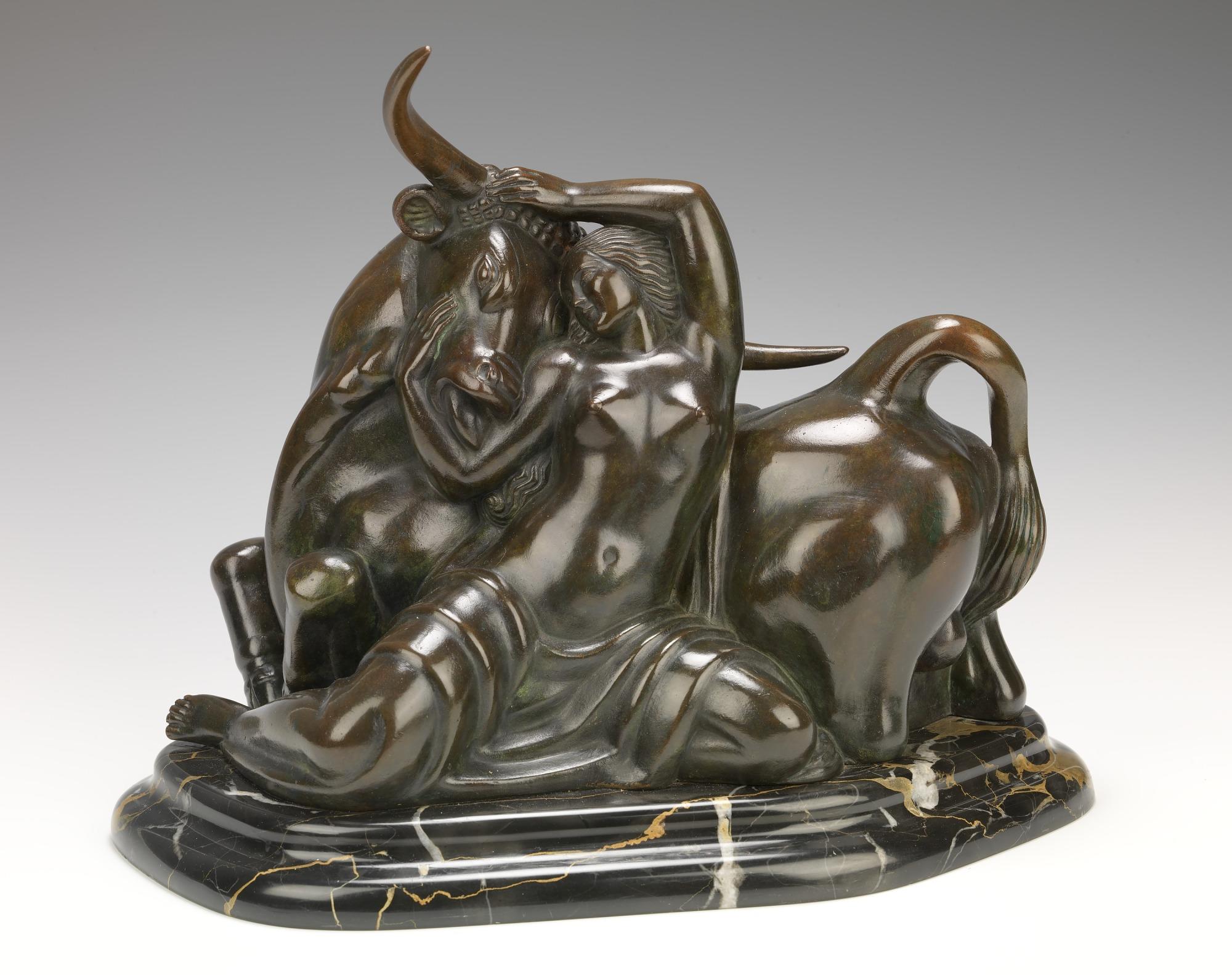
Paul Manship (American, 1885–1966), Europa and the Bull, 1924. Bronze, 26 x 31.6 x 18.1 cm (10 1⁄4 x 12 1⁄2 x 7 1⁄8 in.)
Smithsonian American Art Museum (1966.47.40)
A year later, Manship explored a third version. In The Flight of Europa, Europa sits upright facing backwards on the charging bull. Her legs are casually crossed and her face is calm, as Eros, the god of love, whispers in her ear. The dolphins—which are included in the original roundel—return as part of the base for the main figures. Unlike the menacing fish in Titian’s painting, the dolphins remain docile.
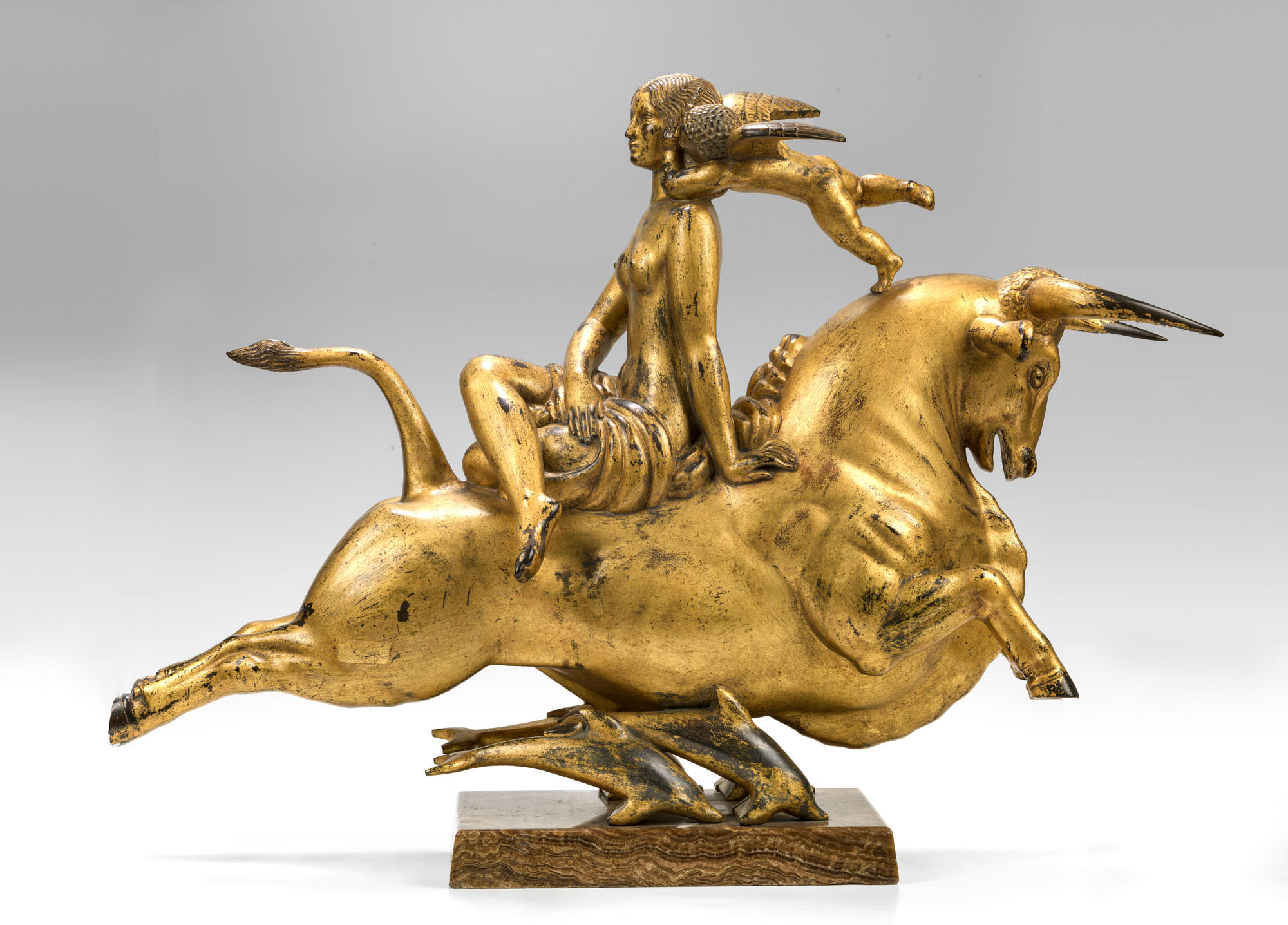
Paul Manship (American, 1885–1966), The Flight of Europa, 1925. Gilded bronze, 56.2 x 78.8 x 19.8 cm (22 1⁄8 x 31 x 7 3⁄4 in.)
Smithsonian American Art Museum (1965.16.26)
While Isabella did not live to see Manship’s attempts at sculpting Europa in the round, she pursued acquiring one of his larger works of a different subject toward the end of her life. Throughout their friendship, she admired his work, often asking to see pictures of recent creations. After receiving some photographs in 1921, she wrote to her accountant, “Mr. Manship has recently finished a statuette of Diana which I think is very attractive…. I should like very much to have it.”
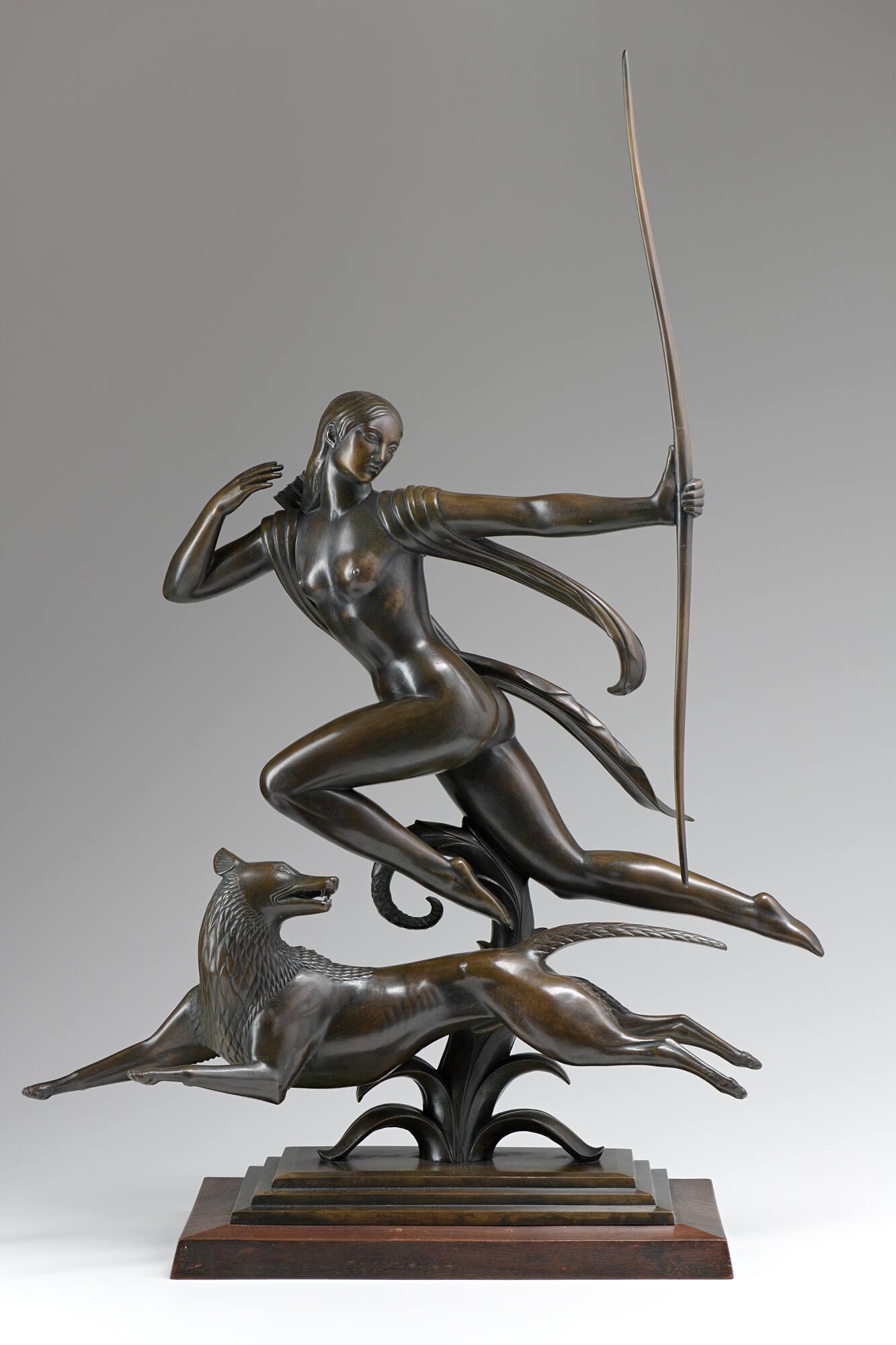
Paul Manship (American, 1885–1966), Diana, 1921. Bronze, 96.2 x 62.2 x 27 cm (37 7/8 x 24 1/2 x 10 5/8 in.)
Isabella Stewart Gardner Museum, Boston. See it in the Macknight Room
In the story of Diana, the hunter Acteon surprised the Roman goddess of the hunt while bathing. To punish him for seeing her nude, she shoots him with an arrow that turns him into a stag. In Manship’s work, Diana is leaping through the air immediately following the arrow’s release from her bow. Diana—a more active female figure than Manship’s Europa—appealed to Gardner perhaps because of her fierce power.
Manship wrote to Gardner, “It is always such an inspiration to see your palazzo and I can imagine it now with its Art and flowers—and so inseparable from thoughts of you.” The collection that influenced Manship to explore the subject of the rape of Europa continues to be a source of inspiration for today’s artists, such as Mary Reid Kelley and Patrick Kelley. The pair chose to explore Europa’s voice and the implicit violence of her story in their nine minute film, on view in the Fenway Gallery through January 2, 2022.
You May Also Like

Read More on the Blog
Interview with Mary Reid Kelley

Explore the Exhibition
Titian: Women, Myth & Power

Explore the Museum
Visit the Titian Room
